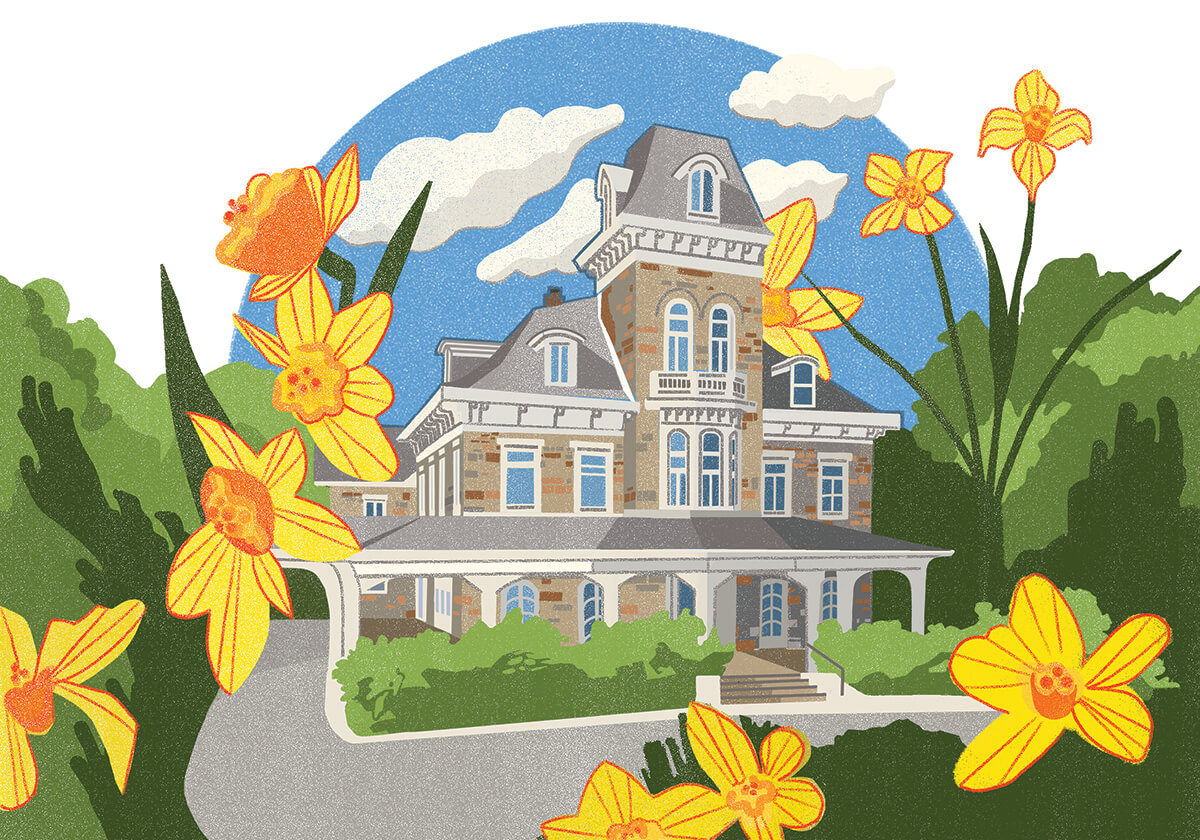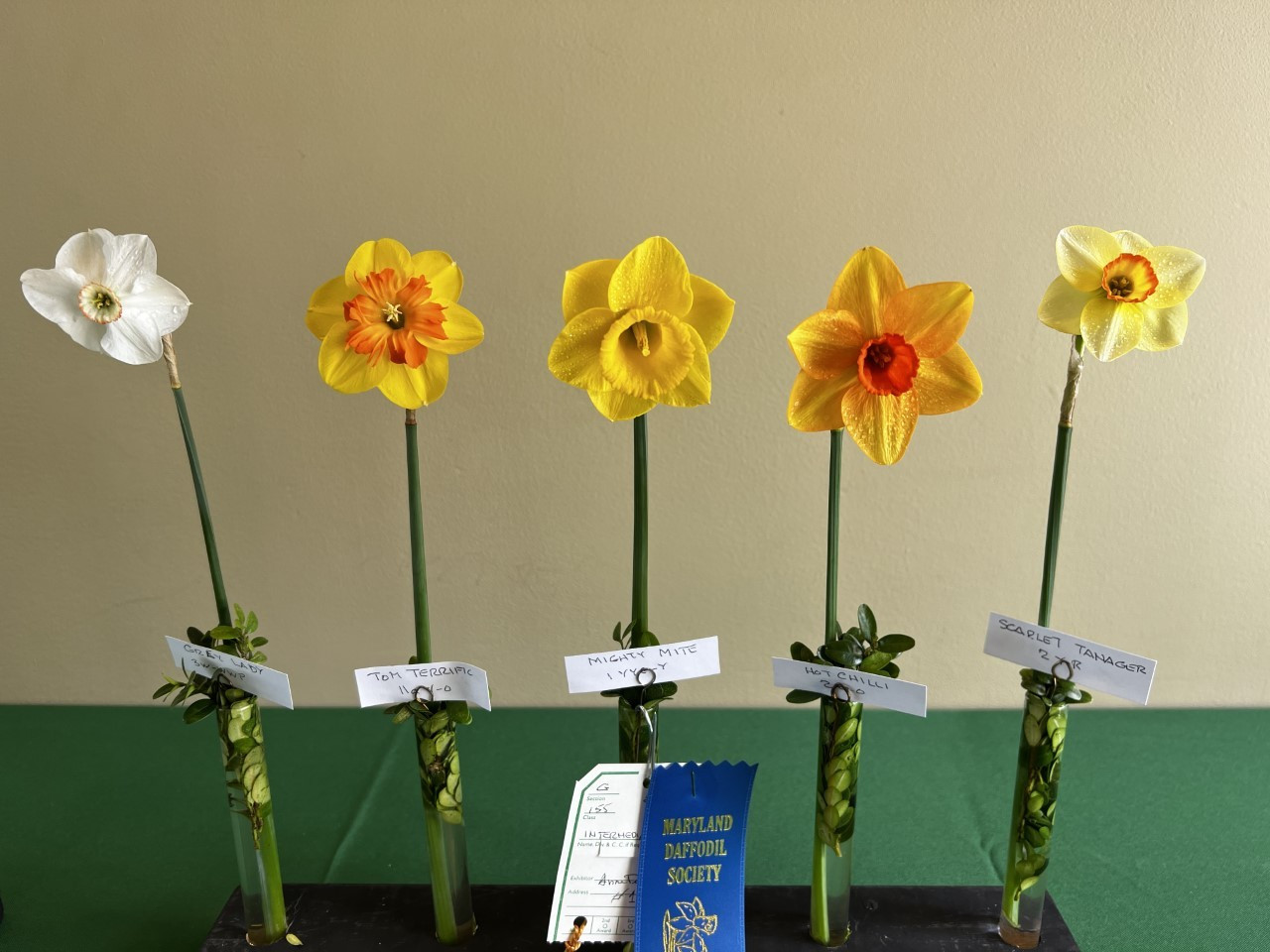Arts & Culture
The Maryland Daffodil Society—The Oldest in America—Prepares for its 100th Show
The display is one of the nation’s largest, with as many as 210 horticulture classes, as well as others for design and photography.

Enter the Vollmer Visitor Center at Cylburn Arboretum on April 16 or 17, and you will be met by the sight of approximately 1,000 daffodils, immaculately displayed in pristine glass bottles and test tubes like little soldiers with starbursts for faces.
These specimens are the best of the best, pedigreed examples of the beloved blooms that cut through late winter’s gloom like a welcome ray of sunshine—a beacon of warm days ahead.
“When you see a daffodil, you know spring is coming,” says Julie Minch, past president of the Maryland Daffodil Society and a longtime board member. For her, the charm of daffodils is their cheerful blooms but also their remarkable resilience. “Daffodils are easier [to grow] than some plants. They want to live. You can plant one upside down and they will turn it around, figure it out, and bloom.”
And since daffodils multiply themselves each year, you can spread them around your yard or dig them up and gift them to friends.
Begun in 1923 by local garden club members and daffodil devotees, the Maryland Daffodil Society is the oldest of its kind in the U.S. Its first daffodil show, held at the Elkridge Country Club, had 10 horticultural classes and one artistic class. The entry fee was 10 cents. The show has grown in size and popularity, moving from locations like the Baltimore Museum of Art and Kenilworth Mall before putting down roots at Cylburn.
Now, celebrating its 100th show this month, the show is one of the nation’s largest, with as many as 210 horticulture classes, as well as others for design and photography. The show is free and open to the public, and anyone from a seasoned grower to an amateur gardener can enter a bloom so long as they know the cultivar name. Which is no small feat, considering there are now over 32,000 named cultivars.

It is this wide variety of daffodils that Minch says the society likes to share with the public. There are daffodils with blooms as tiny as a pinky nail, and double daffodils so frilly they resemble roses.
Anyone familiar only with yellow “daffs” will be amazed at the pinks, reds, oranges, and whites—even greens—on display.
“Any opportunity in the horticulture world to educate the public is a good thing,” says Minch.
Encompassing the essence of spring’s joy, daffodils have captured the heart of everyone from poet William Wordsworth to children’s book author A.A. Milne. But if you need one more reason to adore them, consider that every part of these hardy flowers is poisonous to deer, making them the only true deer-proof plant for your garden.
Want to pick some daffodils up for yourself for fresh blooms next year? Check out the Society’s annual bulb sale in November, too.